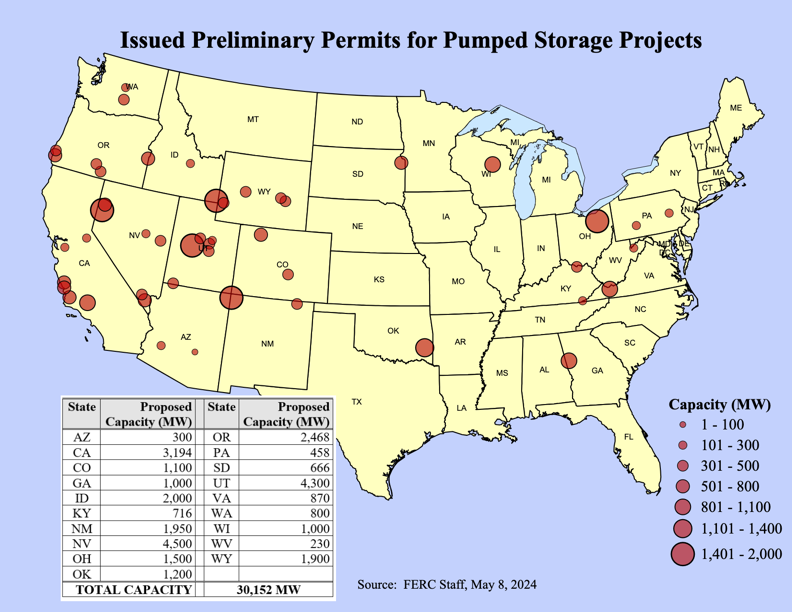Defining Low Impact Pumped Storage
The need for long-duration electricity storage is clear - intermittent renewables must be balanced by something other than fossil-fuel electricity generation, such as natural-gas plants. Pumped storage hydropower is a proven large-scale, long-duration storage option that is being considered anew across the US.
What is Low Impact Pumped Storage?
Pumped storage is a giant water battery that pumps water to an upper reservoir when energy is abundant and releases that water through turbines into a lower reservoir when energy is needed. Dozens of pumped storage facilities, yet to be constructed, are in the permitting pipeline. The majority of these use a closed-loop (off-river) design. Many in the hydropower industry ecosystem tout closed loop as being “low impact”; however, no clear definition of low impact pumped storage exists for either closed loop or open-loop (on-river) pumped storage systems.
LIHI's Role
Since projects can be revised until a license is issued, this is a unique, limited-time opportunity to influence pumped storage design to proactively address its impacts. The Low Impact Hydropower Institute (LIHI) has been the leader in defining and assessing low impact hydropower in rivers and seeks to leverage its 25 years of experience and partnerships to create a collaborative, interested party-driven definition of Low Impact Pumped Storage hydropower. Creating a broadly accepted definition requires incorporation of clear, outcome-oriented, science- and knowledge-based goals for each area of potential impact.
Through direct invitation and public solicitation, LIHI has assembled a volunteer, multidisciplinary team of subject matter experts to develop detailed criteria for Low Impact Pumped Storage utilizing dialogue, information sharing, research, and public comment. Expert domains include water, land, and river science and conservation; tribal knowledge and experience; cultural and historic resources; environmental and social justice; hydropower policy; energy grids and markets; and project development and operations.
Goals and Objectives:
- Determine the environmental, social, cultural, and tribal resources potentially impacted by the construction and operation of new and existing pumped storage projects in the US;
- Identify stringent but achievable goals that would lead to the least impactful outcomes for each resource;
- Define science- and knowledge-based standards for demonstrating that the goals have been met at a project; and
- If an acceptable definition can be developed, publish this definition, such that it can be used to evaluate the impacts and inform the design of projects looking to be low impact;
- Share progress and findings along the way in the form of op-eds, blog posts, and briefs.
Through literature review and expert consultation, LIHI has compiled a list of potential impact categories to explore in-depth with the Pumped Storage Advisory Group. These potential impact categories act as the basis for Advisory Group discussion and exploration of what could constitute a Low Impact Pumped Storage Hydropower Project.
Potential Impact Categories:
- Geology and Soils
- Water Quality
- Water Quantity and Availability
- Air Quality and Greenhouse Gas Emissions
- Land Use
- Terrestrial Ecology
- Aquatic Ecology
- Recreational, Public, and Traditional Cultural Access
- Visual and Aesthetic Resources
- Cultural and Tribal Wealth and Resources
- Socioeconomic Impacts and Environmental Justice
Next Steps
The criteria will be developed over a two-year timeframe through professionally facilitated online and in-person meetings followed by further vetting through public comment. The overall effort will be led by a task force of the LIHI Governing Board which includes at least three governing board members, the LIHI executive director, and up to two external experts.
Upon completion of the ad hoc committee’s work, the LIHI Governing Board will make a go/no-go decision on whether to create a new Low Impact Pumped Storage Certification program based on the proposed low impact definition. If the decision is to move forward, the proposal will be broadly disseminated for public review and comment, and modified if needed, prior to the new program’s implementation.



